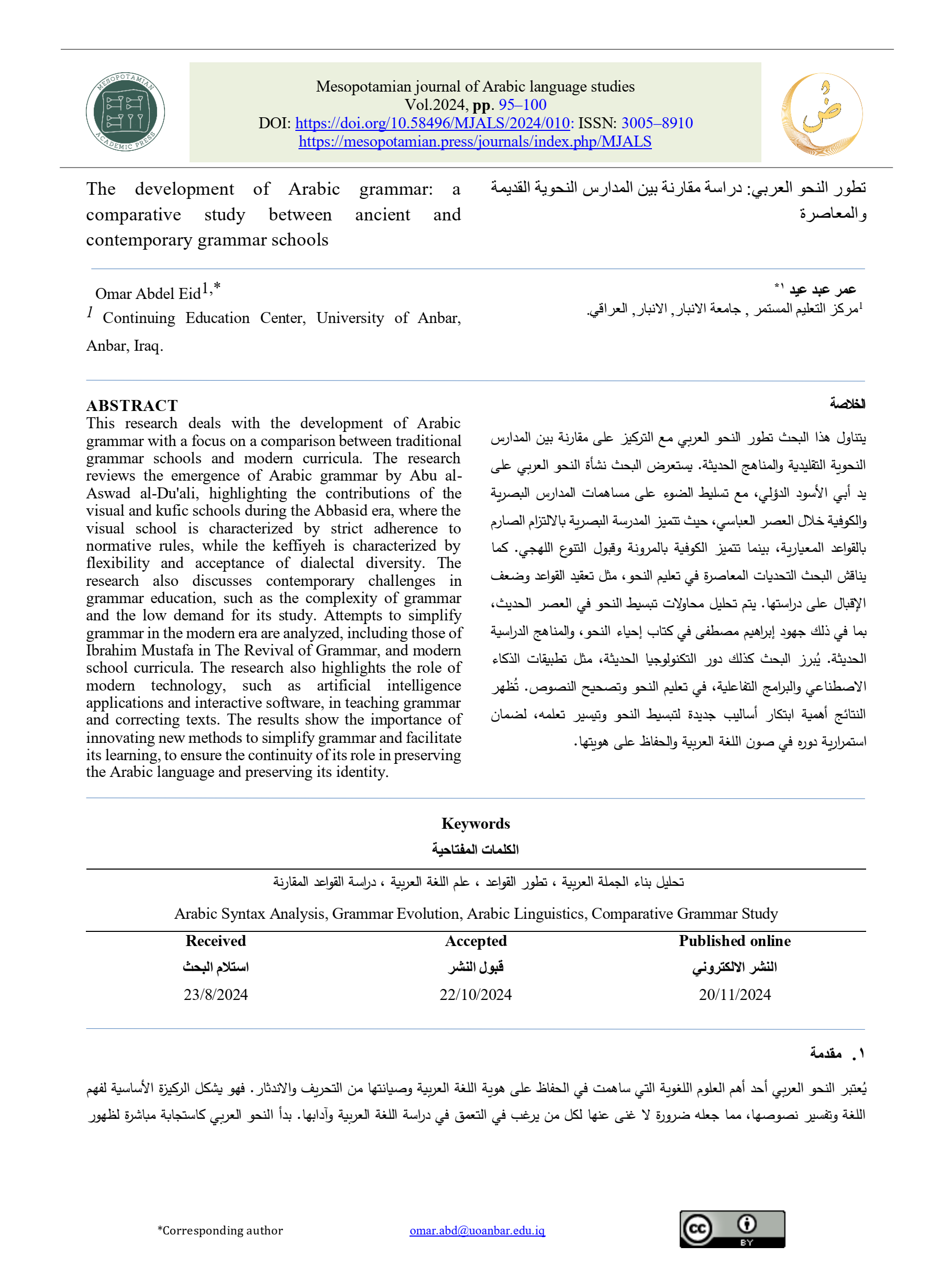The development of Arabic grammar: a comparative study between ancient and contemporary grammar schools
Main Article Content
Abstract
This research deals with the development of Arabic grammar with a focus on a comparison between traditional grammar schools and modern curricula. The research reviews the emergence of Arabic grammar by Abu al-Aswad al-Du'ali, highlighting the contributions of the visual and kufic schools during the Abbasid era, where the visual school is characterized by strict adherence to normative rules, while the keffiyeh is characterized by flexibility and acceptance of dialectal diversity. The research also discusses contemporary challenges in grammar education, such as the complexity of grammar and the low demand for its study. Attempts to simplify grammar in the modern era are analyzed, including those of Ibrahim Mustafa in The Revival of Grammar, and modern school curricula. The research also highlights the role of modern technology, such as artificial intelligence applications and interactive software, in teaching grammar and correcting texts. The results show the importance of innovating new methods to simplify grammar and facilitate its learning, to ensure the continuity of its role in preserving the Arabic language and preserving its identity
Article Details
Issue
Section

This work is licensed under a Creative Commons Attribution 4.0 International License.
